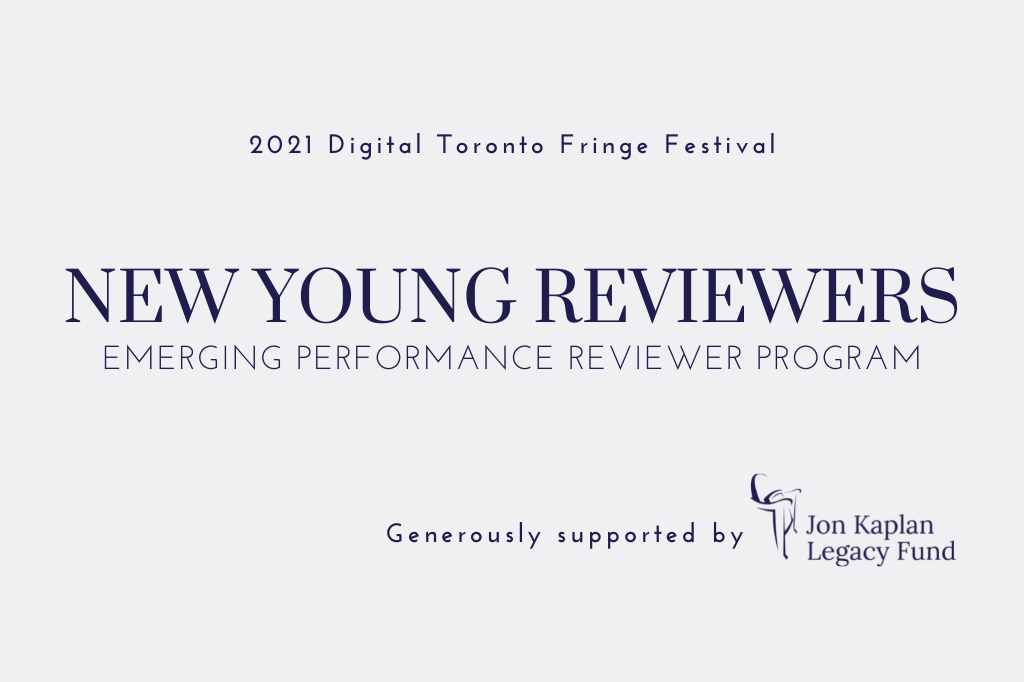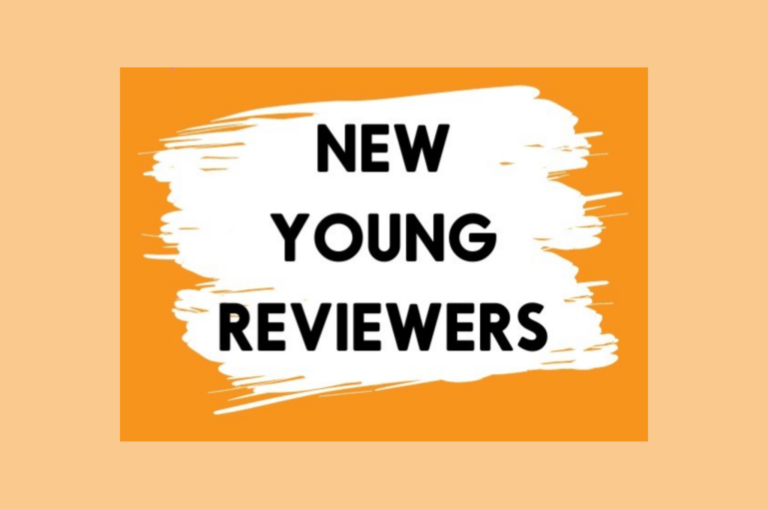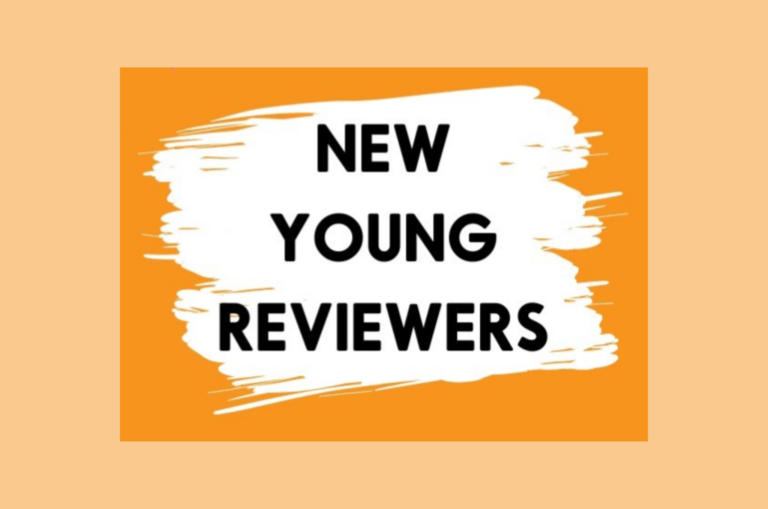The Second Toronto Fringe New Young Reviewers Roundup
With just a few days left in the 2021 Toronto Fringe, the second roundup of reviews from the Toronto Fringe New Young Reviewers Program is here!
Led by Signy Lynch (Contemporary Theatre Review, Canadian Theatre Review, Intermission Magazine) and Stephanie Fung(Kingston Theatre Alliance, Canadian Theatre Review, Single Thread Theatre), the New Young Reviewers Program is a workshop series and writing group for emerging theatre and performance reviewers across Canada. Open to participants ages 15 and up, this program introduces participants to the basics of theatre reviewing, helping them develop responses to Toronto Fringe performances. With support from the Jon Kaplan Legacy Fund, the program encourages participants to explore emerging creative approaches to criticism and to begin to define themselves as critics and reviewers.
Read the first roundup here and the second roundup below!
War of the Worlds Reimagined: Part 1, The Algonquin Tapes
Reviewed by Caroline Toal

War of the Worlds Reimagined: Part 1, The Algonquin Tapes is like The Blair Witch Project meets Signs meets… well… War of the Worlds and it’s freaking awesome.
Presented through “found footage”, War of the Worlds Reimagined is a sci-fi thriller audio drama. The story goes like this:
Alix is over the city. She’s stressed and needs to get out. So, she makes a plan to head to Algonquin Provincial Park for an epic portaging trip. She’ll hike alone for five days before meeting up with her friend Sam, but on her fourth day she spots a strange light hovering in the sky and her trip quickly turns from pure tranquillity to absolute terror.
Frankly, I’m floored by the production quality of this piece. Sound designer/mixer, Miquelon Rodriguez has killed it, capturing the majesty of Algonquin beautifully. From the sound of water lapping around a canoe, to a thunderous rainstorm deep in the woods, we are absolutely transported. The sounds of nature are so crisp, clean, and real that this show could double as a meditation soundtrack… minus all the alarming alien sounds of course.
Great jobs are done by actors Lizzie Moffatt (Alix) and Alice Cavanagh (Sam). They show their range as voice actors and are completely believable as close friends who go way back. With a great natural chemistry, the two play off of each other nicely. Cavanagh’s character mixes comedy into the intensity of the thriller storyline, keeping us engaged.
Director and Writer, Andrew Gaboury should be proud. He’s written a naturalistic, exciting script with relatable characters. I love that this show gives a little nod to the importance of getting into nature. From days one through three of her trip, we can actually hear Alix’s voice calming and becoming more confident as she steeps in the groundedness that nature brings. It’s a nice, authentic touch.
All in all, I loved this piece. War of the Worlds Reimagined: Part 1, The Algonquin Tapes is an entertaining escape from reality and creates a great sensory experience. Thank you, War of the Worlds Reimagined, for making audio drama cool again. I will be on the lookout for parts 2 and 3 – hell, make it a whole podcast season. I’d listen!
Nobody Asked for This
Reviewed by Cindy Ci

Do you have the desire to laugh during these trying and difficult times? Come enjoy the wonderful musical stylings of Christina Nicolaou in Nobody Asked for This as she expresses the pangs of staying indoors for over a year. This, paired with the exceptional editing of Blair Wood, offers a personal, vulnerable, and honest look into how Christina really feels about this situation.
As a mom during the COVID-19 pandemic, she has been through it all – an online shopping dependency, homeschooling, and the heavy consideration of a reverse mortgage. But it’s the lyrical creativity that allows her persona to shine whilst making light of the hypocrisy that everyone exhibits.
An example comes from Nicolaou’s retail therapy with Amazon. Sure, the accessibility of Amazon Prime provides the instant gratification that emotional spending is dependent on, but can one person stop Amazon from dehumanizing its workers with the harsh working conditions? She acknowledges this conundrum by expressing that “we buy to fill the void…to make some noise… to spark some joy”, but even “just one click, [she] feel[s] sick”. So, “what do we do with that information?”. Big question, with not a lot of answers, especially considering how people need home delivery because they “can’t go past their lawn”.
With digital theatre, dramaturgists and critics alike often consider the limit of an online performance in its engagement with an audience, or a lack thereof. Nobody Asked for This excels at this, for its humour is contained and reflects the surrealness that comes with playing to an empty space – a mirror to the isolation and chaos it can manifest. Wood’s addition of graphics, with bobbing heads, surrounding Nicolaou in fire and other versions of herself, and stock videos, all the more adds to the insanity.
This show is a perfect complement to musical comedy performances to the likes of Bo Burnham and Jon Lajoie and adds yet another perspective to how the multi-dimensional global pandemic event affected individuals.
Asylum
Reviewed by Riley Kelk

Asylum by New Story Productions is a concise snapshot of the soul-crushing process of applying for asylum in Canada. The 8-minute (7 if you don’t count the credits) physical theatre dance piece shows Amir’s (Armon Ghaeinizadeh) interview with the person responsible for processing his asylum claim, intercut with dance scenes on a beach that illustrate his story. The contrast between Amir’s tired face in a blank white room and his expressive dancing on the beach makes Asylum a beautiful metaphor for freedom.
The piece really shines a light on what reasons are considered valid enough to enter Canada. Amir receives a scholarship from a Canadian dance school but dance is not considered educational enough for a visa. His friends are killed by their families while his own family is abusive, but his life is not considered in danger. The application process is many months long, with multiple interviews, and no guarantee of any results. This is Amir’s story but it is also the reality of many people trying to enter Canada.
Ghaeinizadeh does a wonderful job of portraying the hopelessness Amir feels, both in his acting and his dancing. His desperation is evident in his voice, especially as the interview goes on and his interviewer continues to sound neutral. His dance with Tina Bararian, which portrays the murder of Amir’s friend by her husband, is especially provoking in its choreography. The editing by Justine Christensen is spot on, cutting from interview to beach at just the right moments.
The story is told succinctly in both dialogue and movement. There is nothing extraneous in this piece. Every part of it is exactly where it needs to be and it all comes together to create a bittersweet image of a man who just wants the freedom to dance.
Sound of Space
Reviewed by Holly Hebert

What’s your emotional rating? A question asked and answered within Tyler Morgan’s Sound of Space, leaves audiences questioning their own emotive statuses. The show walks a tightrope between isolation and connectivity as Emily Marie Isa (Hilary June Hart) travels on her solo mission to Mars while struggling with leaving her son (Benjamin Yaremko) behind and the dangers of space. Holding a dynamic parallel to the world we’ve been living in for sixteen months, Captain Isa’s need to see others live must triumph over her progressive detachment from human life. The show seamlessly lends itself as a social commentary without even citing the pandemic, and the result is quite profound.
Hart demonstrates a rare vulnerability as she maintains a motherly nature but also exhibits the strength of a soldier, spotlighting the fortitude women hold. Pushing forward this motif even further was the script as an intelligent catalyst – one that incited fear in the characters as much as it did bravery, driving Captain Isa into her life-or-death plight.
The stakes are raised for every second she pulls further from Earth, echoed in the ear-piercing screeches that drop to dead silence. Responsible for post sound effects, Allan Huyesin had a large task, especially given the production’s title. However, Huyesin’s work did live up to the name and, in combination with Raymond Tuquero’s edits, demonstrated the daunting expanse of space by magnifying and subduing certain sounds simultaneously. And their creation of artificial intelligence, Mac, makes it challenging to believe there is a human voice (Leo Mates) behind the robotic inflection and elaborate screen that is the character.
Artists are being forced to adjust to new modes of production; in this case, it is the use of film techniques in a digital theatre format. The cast and creative team manage to blur the barrier between digital theatre and film, offering an expanding definition of what theatre is in trying times like these. A stunning piece that manages to howl amongst empty air, Sound of Space will inflate anyone’s emotional rating in a matter of twelve minutes.
At the End of the Day
Reviewed by Micah Chu

Remember those days where you would sit on your grandparents’ porch and listen as they told stories of their glory days? The sun shining, and sticky popsicles clutched in your hands as you marvelled at their past. At the End of the Day, written by and starring Brenda Kamino, is a throwback to those times. Much like your own grandparents’, the stories retold by Kamino’s Hina are muddled with time and emotions. It’s a reimagination of the life of Kamino’s grandmother, through the relocation and internment of Japanese Canadians during the twentieth century. They are stories of bittersweetness, that recall the happiness and loneliness equally.
The production recounts Hina’s loneliness in a small town and her discomfort amongst a populated detention center, as she is relocated from Genoa Bay with a “population [of] 15” to Hastings Park which housed over 8000 Japanese Canadians. This is a story told through juxtapositions, contrasting Hina’s accounts of relocation with her unchanging location. The entire production takes place within one bedroom and hallway of a long-term care facility while exploring a journey of movement and relocation. These contradictions triumphantly demonstrate the complexity of a person who has lived through many experiences.
Cinematographer and editor Bonnie Anderson, and sound designer Lyon Smith made this short production absolutely captivating. Shot as one continuous scene with barely a break for B-roll footage, the story is told almost entirely through dialogue: Hina mimes out scenes from her recollection and voices from her past (Dawn Obokata, Elley Ray, Raoul Bhaneja) make an appearance, but there is a distinct absence of company. These unique choices allow the audience to understand Hina’s loneliness as she believes that she is the only one who survived “relocation syndrome”.
The story of this Japanese woman, directed by Brenley Charkow, succeeds in giving the audience a peek into the experiences and plights of relocation. Cleverly pulling together humoristic yet realistic dialogue and thematically appropriate cinematography choices, “At The End of the Day” tells a tale often untold in a world that needs these narratives to be retold.












Comments